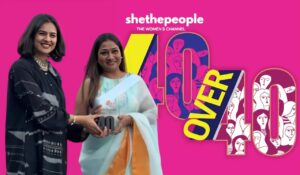Can You Train to Be Creative?

According to the findings of a new study, anyone can be trained to be creative.
Creativity is a skill that is essential in any area of work. It brings innovations, new inventions and sometimes exemplary art forms. But can everyone be creative? Or are there people who are creative and those who are not creative?
According to the findings of a new study, anyone can be trained to be creative. The results of the study were published in the journal ‘Annals of the New York Academy of Sciences’.
In this study, researchers developed a method for training people to be creative, one that shows promise of succeeding far better than current ways of sparking innovation. This new method is based on narrative theory and helps people be creative in the way children and artists are. This is done by making up stories that imagine alternative worlds and by shifting perspectives and generating unexpected actions.
The narrative method works by recognizing that we’re all creative, said Angus Fletcher, who developed the method and is a professor of English and a member of The Ohio State University’s Project Narrative. “We as a society radically undervalue the creativity of kids and many others because we are obsessed with the idea that some people are more creative than others,” Fletcher said. “But the reality is that we’re just not training creativity in the right way,” he added.
Fletcher along with researcher Mike Benveniste successfully used the narrative approach to train members of the U.S. Army’s Command and General Staff College. Fletcher wrote a publicly available training guide based on his methods that were tailored to officers and advanced enlisted personnel. They have also worked with the University of Chicago Booth School of Business, the Ohio State College of Engineering and several Fortune 50 companies to teach creativity to their staff and students.
Fletcher noted that the narrative approach of training creativity through telling stories resembles how young children are creative – and research shows that young children are more imaginatively creative than adults. But the ability of children to perform creative tasks drops after four or five years of schooling, according to studies. That’s when children begin intensive logical, semantic and memory training. The narrative approach to creativity can help people unlock the creativity they may have stopped using as they progressed through school, Fletcher said.
One advantage for organizations that train employees to be creative is that they no longer need to strive to hire “creative people,” he said. “Teaching creativity is one of the most useful things you can do in the world because it is just coming up with new solutions to solve problems,” he said.
Being trained to be creative would hopefully create a better world with more innovations and better creations. We can hope to see a better world soon.
-Staff Reporter








